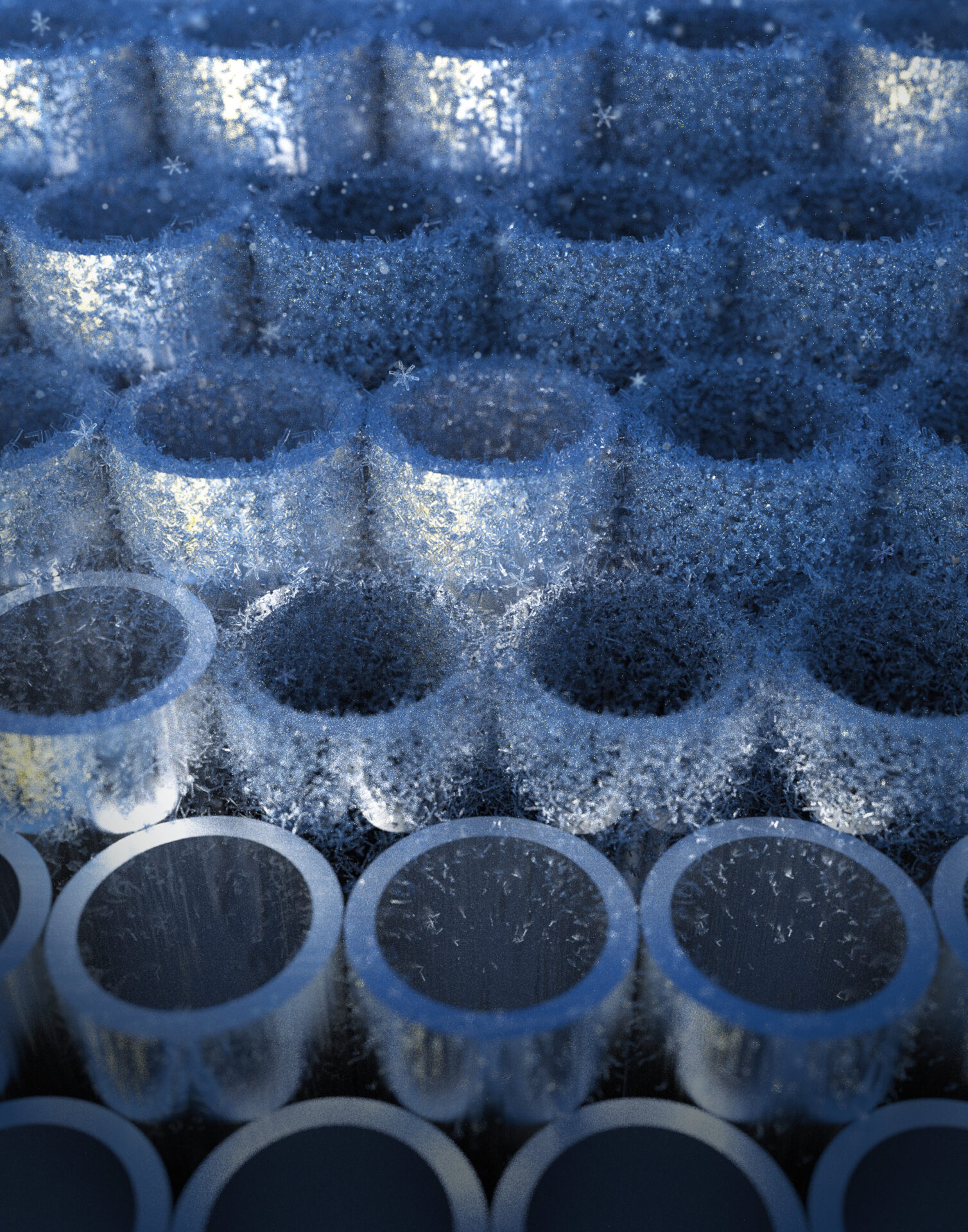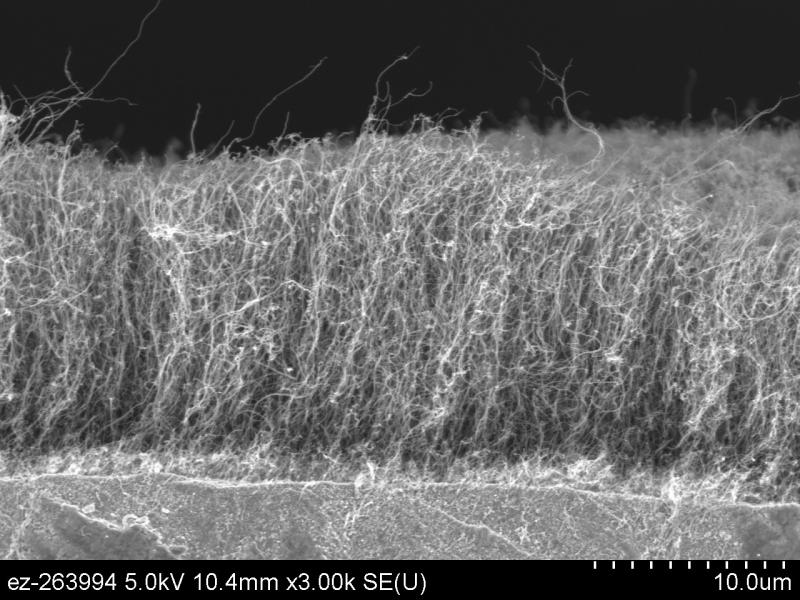
Metallic solid-state refrigerant tubes used for elastocaloric cooling, an environmentally friendly refrigeration technology.
Credit: Jiaqi Dai/Maryland Engineering
Air conditioning, refrigeration and other cooling technologies account for more than 20 percent of today’s global energy consumption, while the refrigerants they use have a global warming potential thousands of times greater than carbon dioxide. In a recent study in the journal Science, a team led by materials science and engineering Professor Ichiro Takeuchi and mechanical engineering professors Reinhard Radermacher and Yunho Hwang introduced a high-performance elastocaloric cooling system that could represent the next generation of cooling devices.
Takeuchi calls it “a completely different, completely green, environmentally friendly cooling technology, which bypasses chemical refrigerants to essentially rely on pushing and pulling pieces of metal to create cooling.” Caloric materials—including magnetocaloric, electrocaloric, and elastocaloric materials—can undergo phase transition and release, and absorb heat upon application of various fields and mechanical forces. The key feature is the compression and release of fatigue-resistant nickel-titanium (NiTi) tubes configured in a versatile, multi-mode heat exchange architecture.
“More than a decade ago, we were just playing with a NiTi wire,” Takeuchi said. “By stretching it, you could get a substantial cooling effect one could feel by hand. That was when we started thinking about applying the concept to a cooling device.” The lab’s subsequent work has been funded by the U.S. Department of Energy for more than a decade.
The team says it’s possible to improve the performance of its system enough to make the technology commercially viable within several years. A current prototype can produce 200 watts of cooling capacity, enough to power a compact wine fridge, with plans to expand to window units, whole-house cooling systems and eventually, commercial HVAC systems.
Original Article: UMD Researchers’ Elastocaloric Cooling System Opens Door to Climate-Friendly AC
More from: University of Maryland College Park
The Latest Updates from Bing News
Go deeper with Bing News on:
Elastocaloric cooling system
- Intel collaborates with ecosystem partners to accelerate liquid cooling solution maturity
Intel is collaborating with its ecosystem partners to accelerate the adoption of liquid cooling in servers and data centers.
- Cooling Off For CASA With KAO
The “Cooling off for CASA” event organized by Kappa Alpha Theta is being hosted on April 26, 2024, from 5 p.m. to 7 p.m. located at the Mary Branch Circle. The event’s lineup of activities, which ...
- Thompson Heating and Air Conditioning details cooling maintenance
With summer weather quickly approaching, now is the time to make sure your cooling system is working as well as possible. Whether you have an evaporative cooling system or refrigerated air, the ...
- iQOO launches its first Magnetic Cooler Clip featuring TEC cooling, a 7-blade fan & RGB lighting
Under the hood, the back clip packs a powerful cooling system. A large TEC cooling plate (2623 mm² surface area), efficient heat dissipation fins, and a 7-blade fan spinning at 5200rpm work together ...
- Accelsius offers liquid cooling without a data center retrofit
That vapor then travels through an industrial manifold to an intelligent Platform Control Unit (iPCU), condensing back into a liquid in a closed-loop system and returning to the vaporator for ...
Go deeper with Bing News on:
Climate friendly AC
- Best Smart ACs with Wi-Fi in India 2024 - April Edition
In the April edition of 2024, explore the latest advancements in air conditioning technology with our curated list of the top 10 smart ACs featuring Wi-Fi connectivity. These innovative appliances ...
- Biden considers declaring a ‘climate emergency’ to limit affordable energy
The public will never willingly trade the advantages of cheap and efficient fossil fuels for power sources that disappear when the sky is cloudy and winds are calm.
- California climate amendment: A conversation with Asm. Isaac Bryan
Assemblymember Isaac Bryan (D-Los Angeles) discusses his bill that could add the right to a healthy environment into the California constitution.
- Incarcerated People Need AC to Combat Extreme Heat. New Climate Funding Could Help.
In total, 44 states lack universal air conditioning requirements in their prisons. A new federal program called the Greenhouse Gas Reduction Fund could help catalyze action.
- Climate-washing litigation: towards greater corporate accountability?
With corporate climate action and climate misinformation coming under greater scrutiny, ‘climate-washing’ is increasingly being targeted through climate litigation. Juliana Vélez Echeverri, Catherine ...










